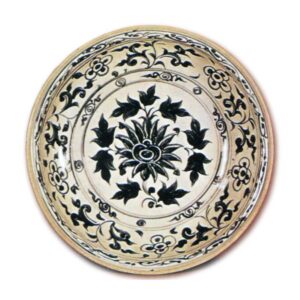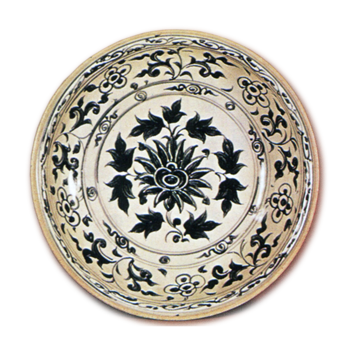
Annam ware with underglaze blue coloring. It is said to have been introduced from China during the Ming Dynasty (1506-66) or the Manryei period (1573-1620). It was first ceramic, then became semi-polished, and later became porcelain. Shibote, as it is commonly called in Japan, is said to have been made about 200 years ago. In general, glazes used in Annan ware have a high ash content, which makes them easy to dissolve, flow, and lose their translucency. It is reasonable to assume that the shibote was not the result of the glaze’s characteristics and was not intended from the beginning, but rather that as the overglaze flowed, the gosu design also flowed, inadvertently resulting in this blurred shibote. In other words, when the kiln temperature is not high enough, the glaze becomes translucent, and when the kiln temperature is too high, the glaze flows and becomes shibote, and the most suitable temperature is normal Sometsuke. The Japanese imitations of what is called “Annan damonte” have a clear dragonfly pattern, but it is possible that a simple, meaningless pattern, which could be called a dragonfly, was imitated in Japan and finally made into a dragonfly. As for Annam blue-and-white porcelain, many materials have been introduced recently, and it is thought that the origin of Annam blue-and-white porcelain dates back to the 14th century or even earlier than that of China. (Sai Tsubokai Lecture Record, “On Annam Ware”)



